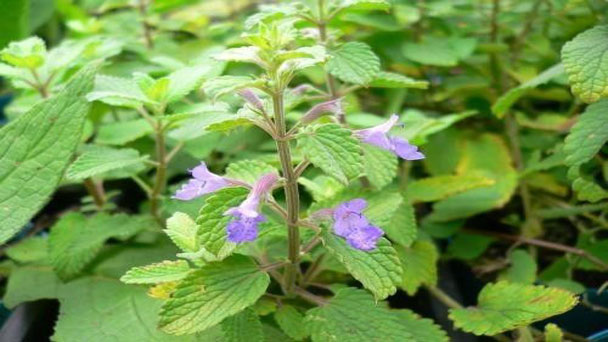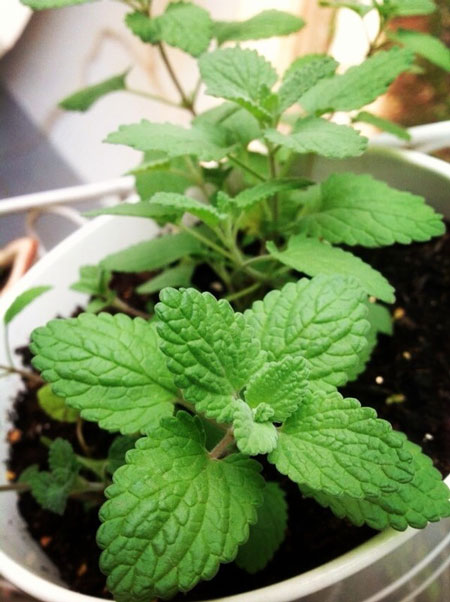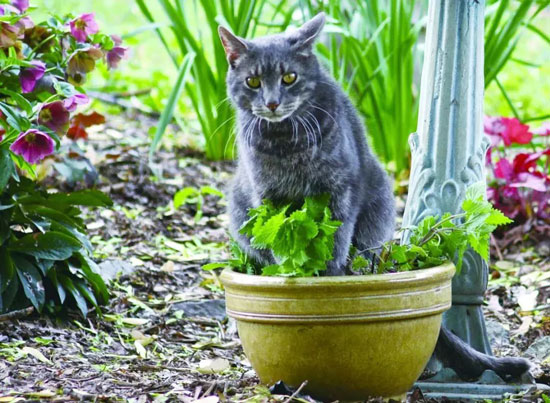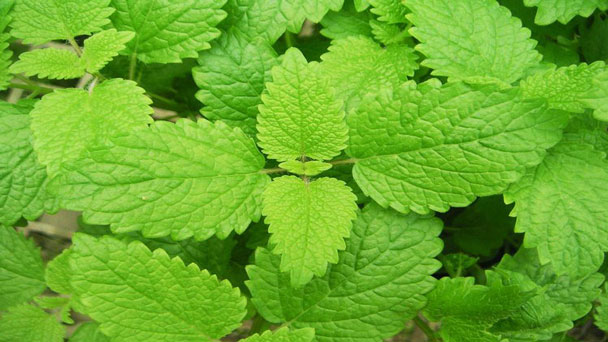Catnip Plant Care: How to Gorw & Care for Catnnip Plant
Written by Iris
Oct 19 2021

Catnip plants (Nepeta cataria) are perennial herbs easy to grow, which thrive in most parts of North America. Catnip plants have a growth habit of clusters, with square stems and triangular to elliptical gray-green leaves with toothed edges that are about 3 inches long. Catnip, which can be grown all over the world, is a common herb plant. It is special for its attraction to cats. Catnip plant is adaptable to a variety of environments, so growing catnip plant isn't difficult. Catnip plants are fast-growing plants that can quickly spread throughout the landscape if left unchecked.

Catnip Plant Picture


Nepeta citriodora: Known as lemon catnip, this plant grows slightly smaller than Nepeta cataria and has a lemony fragrance.
Nepeta camphorata: Commonly referred to as camphor catnip, this plant remains under 2 feet tall and wide.
Nepeta parnassica: Known as Greek catnip, this plant also remains smaller than 2 feet tall and wide and bears light pink flowers.
Kitten: NO. Kittens are not yet developmentally mature and therefore do not respond to catnip, and cats begin to respond to catnip at about 6 months of age.
Neutered cats: YES. Neutered cats don't block the stimulus response, it's not really estrus, it's a similarly high emotional response.
Pregnant cat: NO. Catnip plant is endocrine stimulating and can irritate the cat's uterus, so don't give it to pregnant cats.
What Does Catnip Plant Look LikeWhere to Plant Catnip PlantWhen to Grow Catnip Plants How to Grow Catnip plantsGrow Catnip Plants from SeedsGrow Catnip plants from Stem CuttingsHow to Care for Catnip plantsCatnip Plant Lighting RequirementsCatnip Plant Soil CareCatnip Plant WateringCatnip Plant Temperature & Humidity CareCatnip Plant Fertilizer CareCatnip Plant PruningCatnip Plant Pests & Diseases CareVarieties of Catnip plantsCatnip Plant CautionsCatnip Plants Care FAQAre Catnip Plants Easy to GrowHow Long Does It Take to Grow Catnip PlantsDo Catnip Plants Come Back Every YearCatnip Plant Effect on CatsCan Catnip Plant Excite Human BeingsIs Catnip Plant AddictiveWhy Isn't My Cat Attracted to Catnip PlantCan Kittens, Neutered cats, Pregnant cats Eat Catnip Plant
What Does Catnip Plant Look Like
Catnip plants and mints are two different plants, and their shapes are quite different. Catnip plant is 40 - 150 cm tall, with woody stems at base and pilose surfaces and cymes of flowers. Mint is only 30-60 cm tall, has creeping rhizomes, lanceolate leaves, margin serrate, and flowers in a thyme. Plus, they taste different. Catnip plant can excite cats, but it doesn't work on people. Mint has a cool smell and cats don't like it.
Catnip Plant Picture
Where to Plant Catnip Plant
The ideal place for growing Catnip plants is where it can get plenty of sunshine with well-drained soil. Make sure there are no taller plants nearby that create too much shade for Catnip plants throughout the day. Catnip plants (Nepeta cataria) also grow well in containers.When to Grow Catnip Plants
Plant Catnip plants in the spring after the threat of frost has passed in your area.How to Grow Catnip plants
Catnip Plant (Nepeta Cataria) is also known for its aggressive growth and ability to quickly take over a garden or planting space. Growing Catnip plants in containers is a good way to control this aggressive growth. Propagating Catnip plants may start with seeds or stem cuttings taken from another plant.Grow Catnip Plants from Seeds
When growing Catnip plants indoors, it is best to sow in spring or autumn. Catnip plants seeds can be purchased online, at some local nurseries or garden centers, or even from pet stores. Or, if you know someone who has Catnip plants, you can ask them for some Catnip seeds. Hera are steps of grow catnip plants from seeds.- Fill the container with a pre-moistened growth medium.
- Bury the seeds ¼ inch deep.
- Keep growing media moist but not soaking wet. Catnip seeds need water to germinate, but you do not want cataplexy.
- Germination usually takes 7 to 10 days. Once the seeds have germinated, let them grow until they have five or six leaves; At that time, Catnip plants were refined into individual plants in 8 - to 12-inch containers.
Grow Catnip plants from Stem Cuttings
Growing Catnip Plants with stems can save you money on seed purchases, but only if you already own Catnip plants or know someone else owns. Here are simple steps for growing Catnip Plant from stem cutting.- Fill your container with pre-moistened growth media.
- Cut a 6-inch stem and remove all the leaves from the bottom 2 inches.
- The cutting ends of the stem are immersed in rooting hormone.
- Carefully plant the Catnip plant stem cuttings in a container.

How to Care for Catnip plants
Catnip Plant Lighting Requirements
Catnip plants (Nepeta cataria) need full sun exposure and receive at least six hours of sunlight a day, but prefer afternoon shade when growing outdoors in hot climates. When growing Catnip plants indoors, place them on sunny windowsills in the south or west-facing Windows. Rotate the container every few days to prevent Catnip plants from bending toward the light, a phenomenon called phototropism. Without enough sunlight, Catnip plants grow empty. If necessary, purchase simple growing lights online or at a local nursery to supplement indoor lighting conditions.Catnip Plant Soil Care
Catnip plants aren’t fussy about their soil as long as they have good drainage. Catnip plants can tolerate poor, rocky, and dry soils. A well-draining sandy or loamy soil is best with a slightly acidic to slightly alkaline soil pH.Catnip Plant Watering
Catnip plants are drought resistant and prefer slightly drier soils between watering. Before watering Catnip plants, let the top inch of potting soil dry. Then saturate the container until the water is free from the bottom.Catnip Plant Temperature & Humidity Care
Catnip plants prefers temperatures between 55 and 85 degrees Fahrenheit. Catnip plants tends to struggle in hot, humid climates. Especially in high humidity, make sure there is good air circulation around the plant to help prevent fungal growth.Catnip Plant Fertilizer Care
As with mint and other herbs that contain essential oils, it is recommended not to fertilize Catnip plants. Fertilization promotes productive, vegetative growth and reduces the quality of oil in leaves and flowers.Catnip Plant Pruning
If your Catnip plants are not trimmed occasionally, they will become disorganized. Regular pruning promotes thicker plants. After Catnip plants are in bloom, cut the Catnip plants back 3 to 4 inches from the ground. In a few weeks, it will grow back; This new growth will trigger a new flowering cycle. To prevent insect or disease problems, remove dead or dried leaves regularly.Catnip Plant Pests & Diseases Care
Catnip plants are not prone to many pests or disease problems. Catnip plants may rot if they are left in flooded soil for too long. Another problem is plants that attract cats, which will try to rub and roll on the leaves and can damage the stems. Placing some garden fences or stakes around Catnip plants can help prevent this, just like planting Catnip plants in containers.
Varieties of Catnip plants
Besides Nepeta cataria, there are several plants that go by the name catnip, including:Nepeta citriodora: Known as lemon catnip, this plant grows slightly smaller than Nepeta cataria and has a lemony fragrance.
Nepeta camphorata: Commonly referred to as camphor catnip, this plant remains under 2 feet tall and wide.
Nepeta parnassica: Known as Greek catnip, this plant also remains smaller than 2 feet tall and wide and bears light pink flowers.
Catnip Plant Cautions
In some areas, Catnip plants are considered an invasive plants or noxious weeds. Catnip plants self-sows, remove the flowers to reduce volunteer seedlings the next season. Pregnant women should avoid catnips as it induces uterine contractions which are dangerous.
Catnip Plants Care FAQ
Are Catnip Plants Easy to Grow
Catnip plants (Nepeta cataria) are quite easy to grow and can tolerate many different growing conditions.How Long Does It Take to Grow Catnip Plants
Catnip plant is a fast grower and will reach its mature size within one growing season.Do Catnip Plants Come Back Every Year
Catnip plant is a perennial plant and will come back in the garden each year.Catnip Plant Effect on Cats
Catnip plant has long been known to have some strange effects on cat behavior. Rich in aromatic essential oils, catnip has a powerful, complex scent that needs only the slightest touch. Cats get excited and roll around when they smell it. Some will happily eat a few mouthfuls of catnip, others will narrow their eyes and become extremely intoxicated, all kinds of reactions. The reason why cats like Catnip plants is that it contains a chemical called Schizonepeta lactone. When a cat smells catnip plant, the olfactory epithelium receives onepeta lactone, which triggers sensory neurons and stimulates nerves in the cat's brain. Eventually, the cat's amygdala and hypothalamus receive the stimulus signal. The amygdala controls some of the cat's reflexes: rolling, salivating, chirping, scratching, shaking the head, jumping.Can Catnip Plant Excite Human Beings
Catnip plant has a completely different effect mechanism on humans. Catnip plant doesn't get humans excited. Instead, it has a calming and relaxing effect on human. As a result, catnip plant is used as an ingredient in herbal teas and sedatives, to release migraines, cramps, insomnia, and other conditions.Is Catnip Plant Addictive
Catnip's effect on cats is temporary. Research has shown that the influence of Catnip plants on the cat is not addictive. Mostly, cats will be back to normal after smelling this in 5-15 minutes, and lose interest in the plant. The longest addiction time is usually not more than an hour, and at least 2 hours after it will re-interested in catnip plant. But don't give your cat too much catnip plant, because it is nerve stimulation, and continuous stimulation can easily cause endocrine disorders in cats.Why Isn't My Cat Attracted to Catnip Plant
This is normal. The cat response to catnip is genetic, with about 70% of cats responding to catnip to varying degrees. If your cat doesn't respond to catnip, try some catnip alternatives.Can Kittens, Neutered cats, Pregnant cats Eat Catnip Plant
Catnip produces an estrus-like response in cats, which is a stimulating response to sex hormones.Kitten: NO. Kittens are not yet developmentally mature and therefore do not respond to catnip, and cats begin to respond to catnip at about 6 months of age.
Neutered cats: YES. Neutered cats don't block the stimulus response, it's not really estrus, it's a similarly high emotional response.
Pregnant cat: NO. Catnip plant is endocrine stimulating and can irritate the cat's uterus, so don't give it to pregnant cats.
Latest Updated
- Benefits of Bugleweed - 7 Science-backed Health Benefits
- Bugleweed Dangers & Side Effects - Is It Poisonous?
- How to Plant Evergreen Trees - What You Should Know
- When to Plant Evergreens - Grow Guide for Evergreen Trees
- 12 Wonderful Evergreen Shrubs for Your Garden
- 12 Popular Evergreen Plants with Pictures for Beginners
- When And How To Prune A Lilac Bush Like a Pro
- How to Grow & Care for Lilac Vine (Hardenbergia Violacea)
- Japanese Lilac Tree (Syringa Reticulata) Care & Propagation Guide
- Shumard Oak Pros and Cons - What to Know
Popular Articles
- Winter maintenance of Antirrhinum Majus
- How to Grow Terminalia Mantaly Tree
- How to Grow and Care for Crossostephium Chinense
- How to grow Antirrhinum Majus in spring
- Peristeria Elata (Dove Orchid) Profile: Info & Care Guide
- Underwatered Snake Plant (Sansevieria Trifasciata) - Signs And How To Fix
- How to Care for Brazilian Jasmine Plant (Mandevilla Sanderi)
- How to Grow & Care for Graptopetalum Purple Delight in Summer
- Rosa Chinensis (China Rose): Plant Growing & Care Tips
- How to Care for Baby Sun Rose (Aptenia Cordifolia)